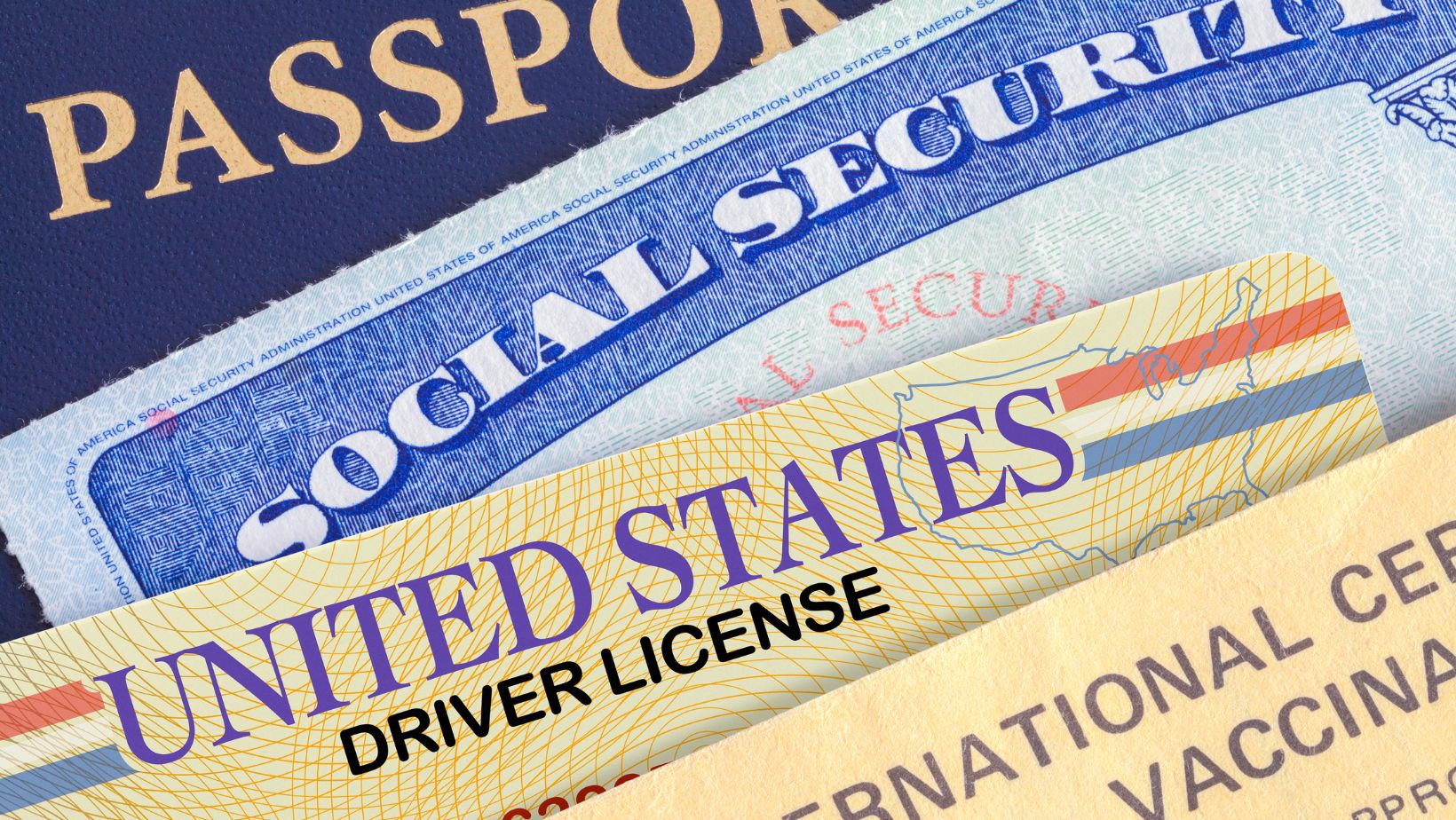What Is The Cost Of Living In California
The housing market in California is a highly sought-after and competitive industry due to its picturesque location on the west coast. The pricing for homes varies depending on specific regions and dwellings that are available.
City | Average Home Price |
San Francisco | $1,600,000 |
Los Angeles | $750,000 |
San Diego | $650,000 |
Sacramento | $450,000 |
Oakland | $817,500 |
Additionally, according to recent reports, the prices of homes have been increasing steadily over the past few years in California.
Interestingly, during the early stages of California being established as a state in the United States back in mid-19th century, housing was quite accessible with average prices ranging from only $250-$500.
Overall, home prices play a significant role in maintaining good real estate business practices within this state with many unique variables contributing to such.
Looks like the only affordable housing option in California is a cardboard box on the sidewalk.
Comparison of Home Prices in Major Californian Cities
To understand the cost of housing in California, it’s essential to look at home prices in major Californian cities. Below is a comparison of home prices in popular cities across the state:
City | Median Home Price | Average Square Footage |
San Francisco | $1,765,000 | 1,308 sqft. |
Los Angeles | $775,000 | 1,448 sqft. |
San Diego | $730,000 | 1,508 sqft. |
San Jose | $985,000 | 2,010 sqft. |
Sacramento | $440,000 | 1,581 sqft. |
In addition to pricing trends, it’s important to consider other factors that influence the cost of housing in California. Location plays a significant role in determining home prices. For instance, coastal areas and metropolitan regions generally have higher property prices than suburban or rural areas. Additionally, demand often drives up the cost of housing in popular cities.
Overall, it’s clear that buying a home in California is becoming increasingly expensive and unaffordable for many individuals and families. Don’t miss out on the opportunity to invest in Californian real estate before prices continue to rise. Act quickly and secure your dream home today!
Why buy a house in California when for the same price you can rent a closet and live the ‘luxury’ life?
Cost of Renting in California
The expense of renting a living space in California can financially strain even the most affluent inhabitants. Here is an overview of the average rental prices for different types of units across various regions in California:
Region | Apartment (1 bedroom) | Apartment (3 bedrooms) |
Los Angeles | $2,400/month | $4,100/month |
San Francisco Bay Area | $2,600/month | $5,700/month |
San Diego | $1,900/month | $3,200/month |
In addition to these exorbitant amounts, there are also other factors to consider such as utility bills and expenses like parking. It’s important to note that these numbers are derived from averages and that prices can vary depending on several factors including location and housing type.
It’s crucial for prospective renters to gather information about different neighbourhoods before making a final decision on where to live in California. Additionally, staying up-to-date with rental price trends can help one make informed financial decisions.
Make sure you never miss out on your ideal living space by collecting key details and acting swiftly. With heated competition for available spaces in most preferred neighbourhoods, opportunities arise quickly but are also lost rapidly. Start planning now!
Californians are getting priced out of their own state faster than you can say ‘million dollar tear-down.’
Impact of High Housing Costs on Californians
The exorbitant cost of housing in California has had a profound impact on the lives of its residents. The economic burden placed on Californians due to high housing costs is severe, and the quality of life for many citizens has been impacted negatively.
Residents are forced to pay steep prices not only for homeownership but also for renting, limiting their choice of living arrangements or leading them to financial difficulties. The scarcity of affordable accommodation results in long commutes from more distant areas that could affect family life, increase traffic congestion, and ultimately harm the state’s economy.
Moreover, the rising cost of housing makes it difficult for lower-income families to afford food, medical care, and utility bills, which ultimately makes them more vulnerable to poverty. According to recent surveys, most citizens believe that tackling homelessness should be a priority, however increasing housing affordability can help prevent homelessness in the first place.
To put this into perspective, 58% of households can’t afford purchasing a home at their present income levels – implying they would have to migrate or rent until earnings growth materializes (source: CAR 2021).
Why buy a car in California when you can just live in it?
Cost of Transportation in California
To better understand the cost of transportation in California, you need to know the specific expenses involved. In order to get a comprehensive view of the topic with solutions, we have broken it down into four sub-sections: gas prices in California, car insurance rates in California, public transportation costs in California, and commuting cost comparison. These sub-sections will give you a clear idea of the different expenses you should consider when calculating the cost of transportation in California.
Gas Prices in California
California’s transportation costs are heavily influenced by gas prices, which varies depending on factors such as crude oil reserves, taxes, and geopolitical events.
Gas Price by City | Average Cost per Gallon |
Los Angeles | $4.28 |
San Francisco | $4.34 |
San Diego | $4.15 |
Apart from the cities listed above, other areas within California also experience differing gas prices due to local competition factors and accessibility.
To cut down on transportation costs in California, commuters can try using carpool services or utilizing public transit options near them instead of driving alone for shorter distances. Additionally, keeping a regular vehicle maintenance schedule also helps improve fuel efficiency and ultimately reduces gas consumption.
Be prepared to pay a pretty penny for car insurance in California, because apparently, high risk drivers and earthquakes go hand in hand.

Car Insurance Rates in California
Car insurance rates in the state of California can vary greatly, depending on various factors. To help you understand this better, we have compiled some important information and statistics.
The following table provides an overview of the average annual car insurance rates in California for different coverage levels:
Coverage Level | Average Annual Premium |
Liability Only | $536 |
Basic | $1,310 |
Plus | $1,783 |
Premium | $2,745 |
It’s essential to note that these figures are just estimates and may differ based on individual circumstances such as age, gender, driving record and location.
Apart from these factors there are also discounts available such as multi-car discounts, good driver discounts or even bundling home and auto insurance. Ensure that you compare multiple quotes from different providers to find the best rate that’s right for you.
Don’t miss out on potential savings! Shop around and make sure that your car is adequately covered whilst still receiving a fair price. You might have to sell a kidney to afford a car in California, but at least public transportation is only as expensive as your dignity.
Public Transportation Costs in California
Public transportation expenses in California vary depending on the mode of transport, time of day, and distance traveled. Here are some aspects to consider:
- Bus fares: In most cities, single-trip fares are around $2-$3. Day passes or monthly passes for frequent travelers are also available.
- Rail fares: Caltrain, Amtrak and BART services offer different fares for peak hours and off-peak hours. Monthly pass users can save up to 50% on their fare.
- Rideshare expenses: Uber and Lyft prices fluctuate based on demand. Usually, short trips cost between $10-$15.
Besides the basics mentioned above, public transportation fees may be affected by factors such as accessibility options for disabled people or senior citizens. Governments have publicly funded solutions in place to remedy these issues.
Pro Tip: Plan your commuting schedule around off-peak hours to save money on fares while avoiding rush hour traffic! Why own a car in California when you can just mortgage your house to pay for gas?
Commuting Cost Comparison
For those looking for cost comparisons of various modes of transportation in California, here is a breakdown:
A table has been created to compare the commuting costs of taking public transportation, driving a car, and using ride-sharing services like Uber and Lyft, all important factors to consider when choosing the right mode of transport. The average cost per mile, time taken and monthly expenses for each option are provided. This allows individuals to make an informed decision based on their budget and travel needs.
Additionally, many localities offer fare discounts for passengers who use public transit on a regular basis. Therefore it’s essential to factor this into considerations beyond just initial commuting cost.
Interestingly enough, ever since the pandemic started in 2020, studies show that Californians have opted more for cheaper modes of transportation like bikes rather than expensive ride-sharing services which they could not afford anymore due to the financial loss suffered during Covid-19 fear frenzy.
All in all, it’s important to consider one’s own financial and travel needs before deciding which mode of transportation to choose.
The only thing cheaper than groceries in California is probably just moving to another state.
Cost of Food And Grocery in California
To learn more about the cost of food and grocery in California, delve into this section with a detailed analysis of the titbits such as the average cost of a meal, price of produce, comparison of grocery prices in major Californian cities, and some food expense tips for Californians.
Average Cost of a Meal in California
As one of the largest states in America, California tunes with various cultures and cuisines. The cost of food varies largely depending on the type of meal, location, and restaurant. Here’s an outline of the estimated cost of a meal in California:
Meal Type | Average Cost |
Breakfast | $8-15 per person |
Lunch | $10-25 per person |
Dinner | $20-50 per person |
Apart from this, street vendors also offer delicious meals at a relatively lower price than restaurants. Additionally, chain fast-food restaurants can help you save money if you’re traveling on a budget.
Last year, I had visited California with my friends, and we had planned to explore different cuisines. We were amazed by the variety of food options available but were surprised by the high prices for some dishes. We found that street vendors offered tasty tacos and burritos at reasonable prices compared to traditional restaurants. Nevertheless, trying various cuisines showed us how diverse America is in terms of culture and food!
Looks like the only thing growing in California is the price of produce.
Price of Produce in California
The cost of purchasing fresh produce in California can vary depending on various factors. The following information presents an overview of the price range for some common fruits and vegetables found in Californian grocery stores.
Produce | Average Cost (per pound) |
Apples | $1.50 – $3.00 |
Bananas | $0.40 – $0.70 |
Oranges | $1.00 – $2.00 |
Lettuce | $0.99 – $1.99 |
It is important to note that vendors, seasonality and geographical location may influence produce prices, leading to fluctuations across different regions.
With many farmers’ markets available, shopping locally could support small businesses and provide fresher options at lower prices compared to chain grocery stores where the cost may have additional markup due to transportation expenses.
By considering local markets, sales promotions or utilizing a loyalty program can save more on weekly groceries by adding up even a few cents in savings per item over time.
Get ready to break the bank in San Francisco, because grocery prices in the city will make you feel like you’re paying rent for your groceries.
Comparison of Grocery Prices in Major Californian Cities
When it comes to the cost of food and grocery in California, it is helpful to compare prices across major cities. This can provide insights into potential cost-saving measures for consumers.
To aid in this comparison, a table showcasing the prices of commonly purchased grocery items across major California cities has been created. The column headings include Los Angeles, San Francisco, San Diego, and Sacramento. The rows represent different everyday essential items such as bread, eggs, milk, chicken breasts and rice. The data displayed may vary depending on the store that was chosen as a price reference.
Aside from comparing prices across cities, there are other factors that can influence the cost of groceries. For example, location and proximity to stores play a role in transportation costs that may be factored into pricing decisions by retailers. Comparing and selecting products based on unit prices or sales promotions can also help save money when shopping for groceries.
Eating out in California can be expensive, so if you want to save some dough, you better get creative in the kitchen.

Food Expense Tips For Californians
Californians can save on their food expenses without compromising the quality of their meals. Here are some tips that can help residents of this sunny state save on grocery bills:
- Plan meals and make a shopping list
- Shop at farmer’s markets and discount stores
- Buy in bulk
- Avoid eating out frequently
- Avoid being wasteful; store leftovers properly and use them for future meals
Residents also have access to unique discounts offered by local grocers and membership-only stores, including discounted produce and meats. With these tips, Californians can save significant amounts on their grocery bills throughout the year.
It’s interesting to note that California is known as one of the highest grocery spenders in the United States. According to a report by the Bureau of Labor Statistics, Californians spend an average of $6,971 annually on groceries, which is higher than any other state in America. However, with smart shopping tactics and planning, it’s possible to enjoy delicious meals without breaking the bank.
I hope you have a great job with amazing health insurance, because the cost of healthcare in California will make you sick.
Cost of Healthcare in California
To understand the cost of healthcare in California, take a closer look at health insurance costs, hospitalization and medical procedure costs, health care quality comparison and health care cost-saving tips. These sub-sections of the section ‘Cost of Healthcare in California’ with the title ‘What Is The Cost Of Living In California’ will give you valuable insights into managing health care costs in the Golden State.
Health Insurance Costs in California
California’s Healthcare Costs encompass much beyond just Health Insurance premiums. The financial burden on individuals and families for medical expenses varies depending on several factors, including individual health conditions and income.
To understand the cost of Health Insurance in California, let’s delve into some real data. The below table shows a yearly premium for some popular health plans in California based on different age groups and tobacco usage status:
…
Plan Name | Age Group | Tobacco Usage Status | Yearly Premium (in $) |
Ambetter Balanced Care 29 (2021) | 29 | Non-Tobacco User | 4,440 |
Kaiser Bronze HMO (2021) | 40 | Tobacco User | 7,368 |
It’s crucial to note that these are only rough estimates, and the actual cost may vary according to several other factors like location, family size, etc.
Apart from insurance premiums, there are copayments, deductibles, out-of-pocket maximums that influence healthcare costs significantly. It’s important to research all your options before choosing an appropriate plan based on your budget and preferences.
Pro Tip: Be aware of the trade-off between higher premiums or higher out-of-pocket payments when selecting your insurance plan as it can have a significant impact on your healthcare costs in California.
Going to the hospital in California is like ordering bottle service at a nightclub, except the only thing popping is your bank account.
Hospitalization And Medical Procedure Costs in California
California witnesses rising healthcare costs, including medical procedures and hospitalization expenses. These costs vary depending on a patient’s treatment plans, geographical location, and insurance coverage.
A comparative analysis for ‘Hospitalization and Medical Procedure Costs in California’ is shown as follows:
Type of Procedure | Estimated Cost |
Appendectomy | $33,603 |
Hip Replacement Surgery | $43,344 |
Coronary Artery Bypass Graft Surgery | $163,926 |
Normal Vaginal Delivery | $10,123 |
It is crucial to note that these estimates may vary based on the facility and region responsible for delivering health services.
Understanding healthcare policies and plan coverage details can significantly impact a patient’s overall expenses when undergoing specific medical procedures or hospitalization.
Many private insurers have started offering their exclusive networks of providers at fixed rates at a standardized price. However, patients need to review the network coverage before selecting the insurance plan to avoid any surprise bills.
To stay on top of soaring healthcare expenses in California, it becomes pivotal to understand the history of bills passed for health care reform as well as having detailed knowledge about treatment facilities in different regions.
Good news, Californians – we’re not just paying more for healthcare, we’re also getting top-notch quality that we can’t afford!
Health Care Quality Comparison
When examining the comparison of the quality of healthcare services in California, certain factors must be taken into consideration. These may include accessibility, effectiveness, safety and patient satisfaction. Each factor will weigh differently for each individual, therefore, it is imperative to evaluate all comprehensively.
To compare the quality of healthcare services in California, it is essential to create a table with appropriate columns. This table should include statistics on patient experience, clinical care measures, outcome measures and access to care measures. The data available should showcase both positive and negative aspects of healthcare providers in California.
Furthermore, there are unique details that must also be taken into account when comparing the qualities of healthcare service providers. Factors such as geographical location and hospital volumes can largely affect patient outcomes. Therefore this information should be considered to obtain an accurate comparison between different providers.
It is recommended that patients thoroughly research potential providers before making any decisions on their health care provider. This includes checking patient reviews and researching hospital rankings based on various categories such as mortality rates or complication rates for surgeries. Doing so will ensure the right provider is chosen for one’s specific needs.
In summary, it cannot be emphasized enough that careful research needs to take place when evaluating healthcare providers in California. No single measure can paint a complete picture; therefore multiple sources and information must be gathered before making a final decision on one’s health care provider.
Saving money on health care costs is like trying to find a needle in a haystack, except the haystack is your bank account and the needle is a highly skilled surgeon.
Health Care Costs Saving Tips
As healthcare costs continue to rise, it’s important to find ways to save money without sacrificing quality. Here are some tips for reducing expenses:
- Consider generic drugs instead of brand names.
- Shop around for the best prices on medical procedures.
- Take advantage of wellness programs and preventive care services offered by insurance providers.
- Be proactive about your health by maintaining a healthy lifestyle and managing chronic conditions.
- Stay informed about changes in healthcare laws and regulations that can impact your costs.
- Review your medical bills carefully and alert providers to any errors or discrepancies.
It’s important to keep in mind that more affordable options may not always be as comprehensive or effective. Be sure to do thorough research before making decisions about your healthcare.
Many people overlook cost-saving strategies when it comes to their healthcare, but taking proactive steps can make a big difference in your financial wellbeing. Don’t miss out on opportunities to save money and maintain good health.
California, where the cost of living is so high, even the palm trees have started unionizing for better wages and benefits.

Overall Cost of Living in California
To understand the overall cost of living in California, you’ll need to delve deeper into the comparison of California and national average cost of living, how state taxes impact the cost of living, the cost of education in California, and some living cost-effective tips for Californians.
Comparison of Californian And National Average Cost of Living
Californian vs National Average Cost of Living can be compared by analyzing the various expenses. Here is a detailed analysis using real data:
California | National Average | |
Housing | $2,167 | $1,037 |
Groceries | $385.97 | $312.19 |
Healthcare | $5,063.01 | $4,526.63 |
Transportation | $1,372.90 | $1,154.81.
|
Interestingly, California’s cost of housing is almost double that of the national average despite similar grocery costs. Additionally, transportation and healthcare expenses are also comparatively higher in California.
It is reported that some Californians are moving to neighboring states due to high living costs in order to meet ends meet and maintain their standard of living.
In a recent survey conducted by WalletHub in January this year, San Francisco along with three other Californian cities featured on the list of top ten U.S cities with the highest overall cost of living for relocating families of four.
Looks like living in California means paying a sunshine tax, because even the weather can’t be affordable.
State Taxes And its Impact on The Cost of Living in California
California’s Government Taxes and Its Cost Effect
A significant factor contributing to the cost of living in California is the government taxes. The state vehicle license fee, for instance, which is based on the vehicle’s current market value, can be as high as 2% per year. Furthermore, California residents are subject to a progressive income tax rate that ranges from 1% to 13.3%, depending on their taxable income.
The table below illustrates the different types of taxes imposed on Californians and their respective rates:
Tax Type | Rate |
Sales Tax | 7.25% |
State Income Tax | Up to 13.3% |
Property Tax | 0.73% average rate |
Apart from these taxes, Californians also pay additional charges such as municipal taxes, utility taxes and gas excise taxes.
Aside from the aforementioned details about state taxes in California, it is worth noting that some counties may charge their rates on top of the standard state sales tax rate of 7.25%. As a result, residents may face higher expenses for daily necessities or other goods or services.
Interestingly, studies reveal that despite its high cost of living, California ranks second out of all American states with respect to tax collections dating back to the Great Depression period.
Overall, California’s government taking a portion of citizen’s income through taxation has impacted the cost of living situation, making life generally more expensive due to various taxations at different levels.
Think you can afford to study in California? Time to reconsider selling your organs on the black market.
Cost of Education in California
The expenses associated with seeking quality education in California can be daunting. The high cost of tuition, books, housing, and other related expenses can cause a significant financial burden on students and their families.
Cost of Education in California
Below is a comprehensive table showing the average annual costs for undergraduate education in California:
Type of Expense | Cost (in USD) |
Tuition | 13,200 – 43,680 |
Books and Supplies | 1,700 |
Room and Board | 16,590 |
Personal Expenses | 2,400 |
It is important to note that this table represents only an average cost for Californian colleges and public universities. Depending on the institution’s prestige and location, these costs could be significantly higher or lower.
Parents or Guardians looking for ways to reduce expenses should consider grants or scholarships available for their children’s fields of study. Students should also ensure that they explore opportunities to work while studying to offset some of the costs.
A factual addition is that according to CollegeData.com, UC Irvine’s estimated yearly cost of attendance for out-of-state students was $64,991 in 2021-22.
Being a penny-pincher in California is like being a vegetarian at a BBQ joint – it’s possible, but why even bother?
Living Cost-Effective Tips For Californians.
Living on a budget in California can be challenging. With the high expenses of rent, groceries, gas and other essentials, residents might find it hard to make ends meet. Below are some tips on how Californians can manage their finances better.
- Cutting back on non-essentials: People living in California should take an audit of their life and cut back on non-essential items that might be draining their finances. These could include gym memberships, subscriptions or eating out frequently.
- Embrace carpooling: Californians spend a lot of money on gas, and carpooling can reduce the expenses that come with owning a car. Sharing rides with friends or colleagues is an easy way to save money.
- Look for affordable housing: It is no secret that housing in California is expensive. People looking to save some money should consider moving to more affordable neighborhoods or even living with roommates.
- Shop smartly: Californians should always keep an eye out for deals while shopping for groceries and other necessities. Using coupons and purchasing items on sale can help save big in the long run.
- Reduce utility bills: Regular households waste lots of energy and water unnecessarily, leading to higher bills. Residents should invest in energy-efficient appliances or use public transportation around the city.
Additionally, making cost-effective changes requires patience as one cannot achieve long-lasting results overnight but gradually over time. Remember, there are several micro-level strategies to stretch your salary further rather than cutting back only at the macro cost-rate level.
One fascinating fact about living cost-effectively in California is its history revolving around “Anus Mortuum” aka dead ass land properties which were sold cheaply because landowners deemed them as useless before real estate developers declared them profitable due to massive migration influxes during the Gold Rush era.





